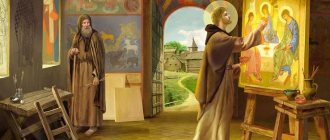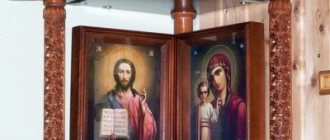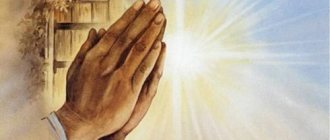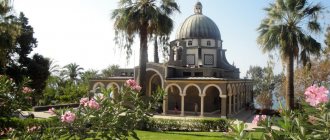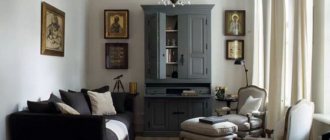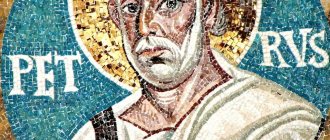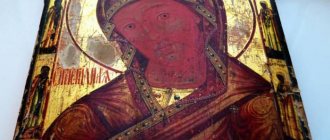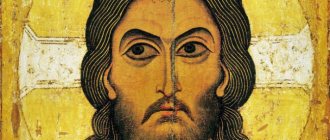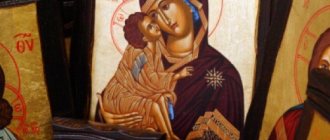“The Business of Icon Making”, or How Icons were Painted in Rus'
Ancient Rus' did not know such an art form as painting. The first picturesque images in Rus' were icons. Old Russian icon painting is rightfully considered the best in the world. And although icon painting as an art, together with its canons, came to Rus' from Byzantium, ancient Russian icon painting soon became distinctive. Originating in the 10th century, it remained the core of ancient Russian culture until the 17th century.
"In the icon painter's workshop." Egor Zaitsev, 1998
The technology for painting icons is unique and complex. Traditions and established techniques affected not only iconography, but also the choice of material on which icons were painted, the substance of the soil, the method of preparing the surface for painting, the technology for making paints and, finally, the sequence of writing.
What were icons written on?
Icons were most often painted on boards: linden was used, in the North - larch and spruce, in Pskov - pine. In general, the choice of wood for making icons was determined by local traditions and what types of trees were common in this particular area.
They tried to paint expensive icons on cypress: this tree lasts longer and does not absorb moisture (by the way, icons were traditionally painted on cypress boards in Byzantium).
It is only at first glance that it seems that any board is suitable for creating an icon. In fact, even the choice of material for future icons was strictly regulated.
As a rule, woodworkers were involved in the production of boards for icons. This process was long and laborious. The board was hewn out of a log, choosing the strongest layer of the trunk - the inner one. In addition, the wood had to be dry and seasoned.
For small icons one board could be used. For large icons, several boards were connected - they were glued together with special wood glue. In order for the soil to stick to the board, the front side of the workpiece was planed with a serrated plane. The back side of the board was also planed, and to avoid warping of the board in the future, dowels were cut into it.
A shallow recess was usually made on the front side of the board - an ark, bounded along the edges of the board by fields slightly rising above it.
Everything in the icon is symbolic: the ark here represents an image of salvation, like the Ark of the Covenant. The raised edges of the board above the ark are the field, and the bevel between the field and the ark is called the husk.
The nature of the fastening, the depth of the ark and the width of the fields often make it possible to determine the time and place of manufacture of the icon board. The fields of ancient icons of the 11th-12th centuries are, as a rule, wide, and the ark is deep. Later icons have narrow margins, and from the 14th century icons were sometimes painted on boards without borders.
A canvas called pavoloka was glued onto the board, and a soil made from chalk and fish (usually sturgeon) glue was applied to the pavoloka - gesso. After drying the board, the gesso was polished to such an extent that the surface of the future icon became like smooth bone.
Before you start painting an icon, the board for it must be carefully prepared.
So, the board for the future icon is ready. And then the fun began.
Cathedral creativity
In Rus', an icon was usually painted by a whole artel, led by one master - he was a spiritual mentor and the embodiment of the sacred (divine) meaning of what was depicted depended on him.
Evangelist Luke paints an icon of the Mother of God (Michael Damascene, 16th century).
Most of the icon painters were monks, and we often do not know their names - the artist did not put his signature on the icon because he perceived himself as a humble “instrument” of God.
During the cathedral process, different parts of the icon were painted by different masters: banner makers, lynchniks, dolichniks, gilders and varnishers.
Drawings - the contours of the future image - were applied to the prepared base. First, the first drawing of the images was performed, then the second, more detailed one. The first drawing was done with a light touch of charcoal from birch branches, the second with brown or black paint.
Trinity of the New Testament. It was with these sketches that the process of painting the icon began.
For each icon there was a pattern of drawing: for the Mother of God of Tenderness - its own, for the Trinity - its own. These samples - originals - indicated what a “genuine” icon should be, corresponding to the canon. The originals, which served as samples, were kept in monasteries.
Markers applied the markings - they “signified” what kind of icon would be created.
After this, the actual writing began. First, they gilded what was needed: light, icon fields, folds of clothing, crowns. Then they did the pre-writing: background, clothes, details. At the final stage, the face and hands were written (this was called a personal letter).
The image of the Golden Robe of the Savior was painted in the 11th century especially for Rus'. The icon received its name because of the now lost solid gilded frame. You can venerate the icon in the Assumption Cathedral of the Moscow Kremlin.
The most difficult thing in painting an icon is the image of the face. Faces are painted with melts, that is, with thinly diluted paints, so that one color imperceptibly flows into another. At the end of the work, the icon painter applies so-called spaces or revives, which give the icon brightness and expressiveness to the face. Sometimes the background of the icon is covered with a thin layer of gold, which gives the icon a particularly solemn appearance.
For a golden background, almost transparent sheets of gold foil were glued onto the pavoloka, and thin lines were often written in created gold.
What colors were used to paint the icons?
When painting icons, paints were used in which the binding medium was an emulsion of water and egg yolk - tempera.
Tempera was the best suited for painting icons: it required the master to work unhurriedly, which was akin to monastic asceticism: tempera cannot be modeled, it can only be layered, strictly ensuring that the new layer is laid on the dried paint. This is how the image gradually “unfolded”. What the master saw with his spiritual gaze appeared on the board in the unfading colors of tempera.
Mineral pigments are traditionally used in icon painting to prepare paints. After preliminary cleaning and grinding, the resulting colored powders are diluted in an emulsion based on egg yolk.
Tempera painting requires virtuoso technique and a high level of writing culture. This was achieved through many years of apprenticeship.
At the end of the work, the icon was coated with oil varnish - drying oil. It made the surface shiny and the colors more vibrant. However, it was drying oil that subsequently became the reason for the oblivion of the original ancient Russian icon.
Why were the icons renewed?
The thing is that the drying oil used to cover the icons tends to darken greatly. And 50-100 years after the creation of the icon, all that remained of the bright image on the board was a brown film, through which dark silhouettes could barely be seen. But the “old” icon still remained sacred and could not be thrown away. Therefore, the icon was renewed - a new one was painted on top of the existing image using the same or similar drawings, again covered with drying oil, and... a hundred years later the same story was repeated.
If you look closely at the 12th-century icon of the Vladimir Mother of God, you can see several layers on it: from the 12th century, only the faces of the infant Christ and the Mother of God have been preserved, and everything else is painting from the 15th and 16th centuries.
Generations of artists changed, and the canons also changed. For example, an icon painter of the 17th century was much freer in his art and painted differently than an icon painter of the 15th century. He could depict more details and figures, and write a rich background. In addition, new colors appeared that previous artists had not yet known. And sometimes, over time, due to numerous renovations, the icon was transformed so that the viewer had no idea what it was like before.
A masterpiece by Rublev or Dionysius could be hidden under several layers of painting.
Therefore, ancient Russian icon painting remained unknown for a long time, and only at the beginning of the 20th century they began to clear old icons, carefully removing the later, mostly not very good painting, layer by layer, until they got to the original image.
What should an icon painter be like?
It is important to note that icon painting in Rus' was considered an honorable and responsible matter; it was considered a gift from God and a spiritual feat requiring a corresponding righteous life.
The master's work was preceded by strict fasting, fervent prayers, receiving blessings from a spiritual mentor and solitude. Painting an icon was an act of communication with another world and required spiritual and physical purification, when everything carnal was suppressed if possible.
Venerable Alypius of Pechersk. Wall painting by V.M. Vasnetsov in St. Vladimir's Cathedral in Kyiv (1885–1895).
The origin of Russian icon painting of the pre-Mongol period is associated with the name of Alypius of Pechersk.
Here are the requirements for the personality and lifestyle of an icon painter we can read in the definitions of the Stoglavy Council of 1551: “An artist should be humble, meek, reverent, not an idle talker, not a laugher, not quarrelsome, not envious, not a drunkard, not a robber, not a murderer, Most of all, maintain mental and physical purity with all caution; and whoever cannot remain like this until the end, let him marry according to the law. It is appropriate for painters to often come to their spiritual fathers, consult with them in everything and, according to their instructions, live in fasting, prayer and abstinence with humility, without any shame ... "
Perhaps your home also contains ancient wooden icons that have become a family heirloom, a shrine passed down from generation to generation. And this is a wonderful tradition.
And in our online store “Yapos” you can purchase wonderful icons made in the Diveyevo workshops in compliance with the technologies of ancient masters and decorated with beads, gold embroidery, and natural stones. They will definitely take their rightful place in the home iconostasis and will be kept in your family for many years.
Color in Russian iconography
The symbolism of color in icon images is also strictly canonical. Meanwhile, the Russian tradition of iconography is characterized by an unusually bright and rich palette and color scheme.
The Byzantine tradition is characterized by the essential supremacy of the golden color, which was supposed to reflect the divine light itself. In such icons, both the background and important details of the image - halos, cross, etc. - were covered with gold. On Russian icons, gold will be replaced with paints, and purple (the power of the emperor), which was very significant in Byzantium, will not be used at all.
The red color on our icons will be most widely used in the Novgorod school, where the background will be covered with red, replacing Byzantine gold. In terms of content, it will symbolize the color of the Redeemer’s blood, the flame of life.
For white color, the meaning of divine light and innocence was prescribed; it was used in the clothes of both Christ and the righteous and saints.
For blacks, the content was determined by the symbols of death and hell; in general it was used very rarely and, if necessary, could be replaced by dark tones of blue or brown.
Green was the color of the earth (predominant in the Pskov school of icon painting), this color seemed to be opposed to heavenly or royal.
Blue is a symbolism of the sky, eternity, and had the meaning of truth. Both the Savior and the Mother of God could have been dressed in blue robes.
Space in an icon
The arrangement of figures and the construction of the image space itself is another important component of the canon. Today we know about three types of planar display of space available in art. These are the prospects:
- straight line (concentric space). Characteristic of the Renaissance period, expresses the active position and point of view of the artist
- parallel (static space). The image is located along the canvas, typical of oriental art and Ancient Greece
- reverse (eccentric space). Chosen as canonical for icon painting
This perspective reflected the essence of dogmatic positions, when the icon was understood not as a window into the real world, like a Renaissance painting, but as a way of “manifesting” the heavenly world. Here it is not the artist who looks at what he depicts, but the character of the icon who looks at the believer. The space itself is symbolic:
- a hill can represent a mountain,
- a bush is a whole forest,
- the bulbs of churches - a whole city.
An icon can thus have a vertical line that connects earth and sky; So in the lower part of the image the mobile, changeable, human is given, and in the upper part - eternity, the heavenly world.
Icon of the Creation of the World (and God rests on the seventh day)
Late 16th – early 17th century, Stroganov master, inset into a 19th century board.
Wood, gesso, tempera, gilding
36.1 x 28.8 x 2.5 cm
About the icon: Iconography refers to the so-called hymnographic works of the second half of the 16th century. At this time, on the initiative of Metropolitan Macarius, a number of complex symbolic and allegorical subjects appeared in Russian icon painting, illustrating various church chants. The first such image can be seen on the “four-part” icon of the Kremlin Annunciation Cathedral (after 1547), where all the elements of the presented composition are present. Its content, which caused serious controversy immediately after the appearance of the icon, can be interpreted in general terms through the main idea for the universe of the Fall and redemption, as well as the vigilant Divine guardianship of humanity.….read more
ICON OF THE GUARDIAN ANGEL AND SELECTED SAINTS
Beginning of the 19th century, Romanov
Wood, gesso, tempera, gilding
42.2x35x2.6 cm
About the icon: The selection of saints for the icon is determined primarily not by the patronal, but by the functional principle. Almost all of them are healers: St. John the Baptist - for headaches, St. Aptipa and Niphon - for toothache, St. Maron, Cosmas and Damian - from various diseases, St. Memnon healed the terminally ill, St. Ekaterina helped during difficult births. The Icon of the Kazan Mother of God should have been prayed for for eye diseases. In addition, the image of Our Lady of Kazan was especially revered in Romanov and Yaroslavl...read more
Icon “TO THE SAINTS WHAT GRACES OF HEALING ARE GIVEN BY GOD”
Second half of the 19th century, Palekh (?)
Wood, gesso, tempera, gilding
52.5x42.3x3.1 cm
About the icon: The icon belongs to the so-called healing books - images where saints and images of miraculous icons are collected, helping with various needs and infirmities. The models for them were engravings published at the end of the 18th-19th centuries. Our Lady of the Burning Bush, presented at the top of the icon, saved from fire, Our Lady of Kazan healed eye diseases, Our Lady of Tikhvin was prayed for the health of babies, Our Lady of Feodorovskaya - during difficult childbirth...read more
ICON OF THE GUARDIAN ANGEL, WITH ACTS
End of the 18th century, Kostroma
Wood, gesso, tempera, gilding
35.2x30.2x2.2 cm
About the icon: Angels, according to the teachings of the Church, are personal spiritual beings created by God who serve the Lord and proclaim His will to people. Guardian angels protect peoples, states, Christian Churches and each individual Christian. The angel accompanies all Christians from birth to death, instructs his ward in good deeds and turns him away from evil. Images of a guardian angel have been found in Russian icon painting since the end of the 16th century...read more
Icon of the Annunciation with Saints
Annunciation, with Sts. Basil the Great, Antipas, Maroi and Matryona (in the margins)
End of the 18th – beginning of the 19th century
Wood, pavoloka, tempera, gilding
41.2 x 35.5 x 2.2 cm
About the icon: The style, techniques and color of painting in the middle, the paleography of the inscriptions on the upper field and some details allow us to date the icon to the end of the 18th - beginning of the 19th century. (the saints in the fields were added later). Considering the orientation towards ancient examples (in particular, the tops of the royal doors of the iconostases of the 16th century) and the emphasized two-fingered appearance of the Archangel and Hosts, we can confidently say that it was created in the Old Believer environment. The clear Novgorod orientation of the iconography and some other features indicate the author’s familiarity with Novgorod monuments not from drawings, but in reality. ….read more
Icon of the Resurrection of Christ our Lord Jesus
Beginning of the 19th century, Palekh
Wood, pavoloka, tempera, gilding
35 x 30 x 2.7 cm
About the icon: The published work belongs to one of the best Palekh masters of the early 19th century. no doubt. The style, color scheme and some details of the iconography are close to the icons of the Palekh workshop of V.I. Khokhlova. The resurrection as an independent subject is not often found in Palekh icon painting; Perhaps it was the absence of traditional marks that forced the master to work especially carefully on the familiar composition. ....read more
Three-leaf folding. Icon Crucifixion
End of the 17th century. Moscow, Armory Chamber. Salary - 1684-1696
Wood, gesso, tempera; silver, embossing, engraving, gilding; copper alloy, cutting, mounting; silk fabric. 13.5 x 30 (opened), 13.5 x 10.0 x 3.8 (closed)
About the icon: On all the icons along the perimeter there is loss of gesso up to the board and loss of the paint layer due to the rearrangement of the icon case into a later frame. The gold of the halos has been rearranged, the inscriptions with the names of saints have been partially renewed, and small repairs have been made to the surface at different times. The frames also have soldering and uneven edges as a result of later alterations, holes with nail breaks in the corners on each part, and late restoration gilding. In the central part of the fold, the Crucifixion of Christ is presented in a brief version with four upcoming ones and without images of crucified thieves. The strong bend of the sagging figure of Christ and the crown of thorns on His head are elements of Western European iconography, entrenched in Russian iconography in the last quarter of the 17th century.….read more
Icon of the SIX DAYS (SATURDAY OF ALL SAINTS)
First quarter of the 19th century, Palekh, workshop of V.I. Khokhlova (?)
Wood, gesso, tempera, gilding
53.3x44x2.5 cm
About the icon: “Six Days” is the name of theological works by various authors (St. Basil the Great, George Pisis, Cyril the Philosopher, John the Exarch of Bulgaria and others), telling about the six days of the creation of the world. Icons on themes related to the “Sex Day” have been known since the beginning of the 16th century, but the detailed version presented on this icon was formed, obviously, no earlier than the second half of the 18th century. This version is characterized by a clear compositional scheme with the same arrangement of subjects in the center and on the panels. Among the saints there are always three ecumenical saints...read more
